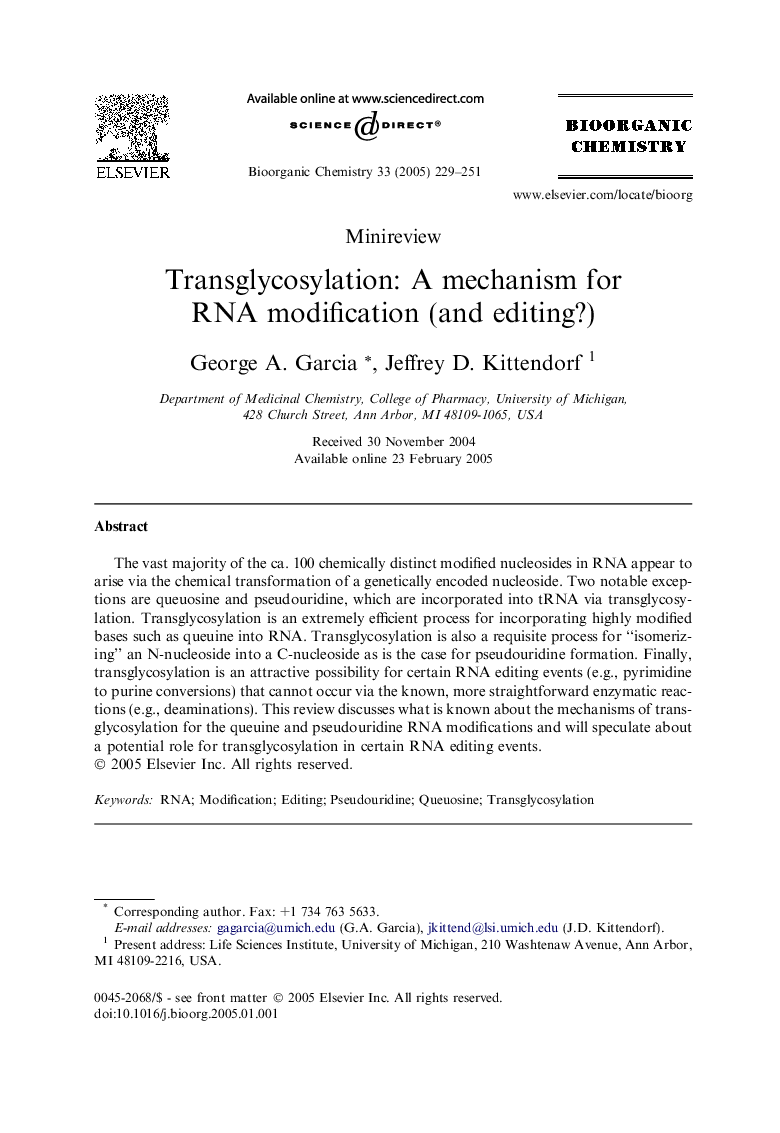| Article ID | Journal | Published Year | Pages | File Type |
|---|---|---|---|---|
| 10582216 | Bioorganic Chemistry | 2005 | 23 Pages |
Abstract
The vast majority of the ca. 100 chemically distinct modified nucleosides in RNA appear to arise via the chemical transformation of a genetically encoded nucleoside. Two notable exceptions are queuosine and pseudouridine, which are incorporated into tRNA via transglycosylation. Transglycosylation is an extremely efficient process for incorporating highly modified bases such as queuine into RNA. Transglycosylation is also a requisite process for “isomerizing” an N-nucleoside into a C-nucleoside as is the case for pseudouridine formation. Finally, transglycosylation is an attractive possibility for certain RNA editing events (e.g., pyrimidine to purine conversions) that cannot occur via the known, more straightforward enzymatic reactions (e.g., deaminations). This review discusses what is known about the mechanisms of transglycosylation for the queuine and pseudouridine RNA modifications and will speculate about a potential role for transglycosylation in certain RNA editing events.
Related Topics
Physical Sciences and Engineering
Chemistry
Organic Chemistry
Authors
George A. Garcia, Jeffrey D. Kittendorf,
